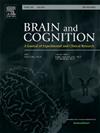青少年坚持24小时活动周期和全脑容量方法:一项横断面研究-认知-行动项目
IF 1.4
3区 心理学
Q3 NEUROSCIENCES
引用次数: 0
摘要
虽然遵守世卫组织24小时运动指南与改善健康状况有关,但其与大脑形态学的关系仍未得到充分探讨,特别是在拉丁美洲青少年等研究不足的人群中。方法采用结构t1加权磁共振成像技术对58例智利青少年的脑形态进行了横断面研究。分析脑容量,包括总灰质、皮质、皮质下、海马和杏仁核区域。通过加速度计评估对中高强度体育活动(MVPA)和睡眠指南的依从性,而屏幕时间则是自我报告的。使用线性回归模型探索指南依从性与脑容量之间的关系,并使用FDR方法校正p值。结果独立来看,大多数青少年仅符合屏幕时间指南(55%),而较少符合睡眠时间(12%)或基于样本特定截止值的MVPA(27%),没有人符合国际MVPA标准。总的来说,只有9%的人同时遵守了睡眠和看屏幕时间的建议,没有参与者同时满足这三项建议。值得注意的是,只有遵守屏幕时间建议与较低的灰质、皮层、皮层下、海马和杏仁核总体积呈趋势水平相关(FDR p值<;0.100)。本研究表明,青少年的日常习惯——屏幕时间、身体活动和睡眠——与大脑发育有着复杂的关系,有时可能会偏离预期模式,就像在符合屏幕时间指南的情况下所看到的那样。作为在拉丁美洲青少年中进行的第一项研究,这些研究表明,这些行为与大脑发育之间的关系可能与高收入国家的报道有所不同,强调需要在不同的社会经济和文化背景下进行进一步研究。本文章由计算机程序翻译,如有差异,请以英文原文为准。
Adherence to 24-hour activity cycle and a whole brain volumetric approach in adolescence: A cross-sectional study – The Cogni-Action project
Background
While adherence to the WHO 24-hour movement guidelines has been linked to improved health outcomes, its relationship with brain morphology remains underexplored, particularly in understudied populations such as Latin American adolescents.
Methods
This cross-sectional study examined brain morphology in 58 Chilean adolescents using structural T1-weighted magnetic resonance imaging. Brain volumes, including total gray matter, cortical, subcortical, hippocampal, and amygdala regions, were analyzed. Adherence to moderate-to-vigorous physical activity (MVPA) and sleep guidelines was assessed via accelerometry, while screen time was self-reported. Linear regression models were used to explore associations between guideline adherence and brain volumes, with p-values corrected using the FDR method.
Results
Independently, most adolescents met only the screen time guideline (55 %), while fewer met sleep duration (12 %) or MVPA based on the sample-specific cutoff (27 %), with none meeting the international MVPA criterion. In combination, only 9 % adhered to both sleep and screen time recommendations, and no participants met all three guidelines. Notably, only adherence to screen time recommendations showed a trend-level association with lower total gray matter, cortical, subcortical, hippocampal, and amygdala volumes (FDR p-value < 0.100).
Conclusion
This study suggests that adolescents’ daily habits—screen time, physical activity, and sleep—have complex relationships with brain development, which may sometimes diverge from expected patterns, as seen in the case of meeting screen time guidelines. As the first study conducted in Latin American adolescents, these suggests proposes that the relationship between these behaviors and brain development may differ from what has been reported in high-income countries, highlighting the need for further research in diverse socioeconomic and cultural contexts.
求助全文
通过发布文献求助,成功后即可免费获取论文全文。
去求助
来源期刊

Brain and Cognition
医学-神经科学
CiteScore
4.60
自引率
0.00%
发文量
46
审稿时长
6 months
期刊介绍:
Brain and Cognition is a forum for the integration of the neurosciences and cognitive sciences. B&C publishes peer-reviewed research articles, theoretical papers, case histories that address important theoretical issues, and historical articles into the interaction between cognitive function and brain processes. The focus is on rigorous studies of an empirical or theoretical nature and which make an original contribution to our knowledge about the involvement of the nervous system in cognition. Coverage includes, but is not limited to memory, learning, emotion, perception, movement, music or praxis in relationship to brain structure or function. Published articles will typically address issues relating some aspect of cognitive function to its neurological substrates with clear theoretical import, formulating new hypotheses or refuting previously established hypotheses. Clinical papers are welcome if they raise issues of theoretical importance or concern and shed light on the interaction between brain function and cognitive function. We welcome review articles that clearly contribute a new perspective or integration, beyond summarizing the literature in the field; authors of review articles should make explicit where the contribution lies. We also welcome proposals for special issues on aspects of the relation between cognition and the structure and function of the nervous system. Such proposals can be made directly to the Editor-in-Chief from individuals interested in being guest editors for such collections.
 求助内容:
求助内容: 应助结果提醒方式:
应助结果提醒方式:


